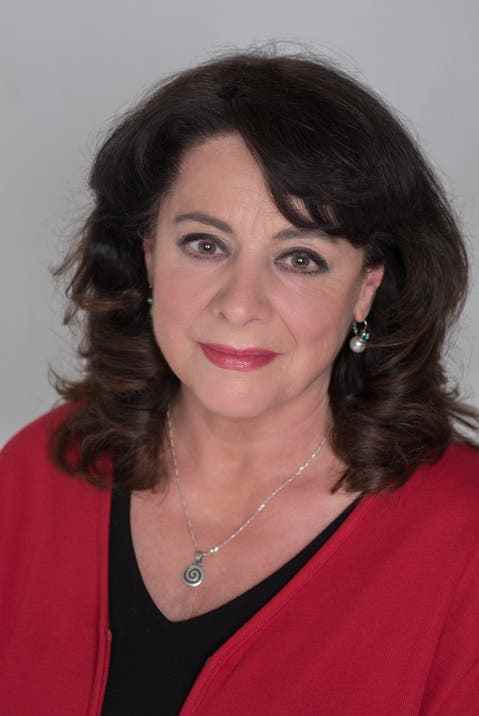Can you like a murderer who has been on US death row for decades? A woman from Zurich tries it – and explains why she still thinks the Swiss judiciary is too lenient.
This is the execution chamber at Central prison in Raleigh, NC, Wednesday, Nov. 30, 2005 where Kenneth Lee Boyd is scheduled to be executed Friday at 2 am for the murder of his estranged wife and her father. Boyd will be the 1,000th execution since capital punishment resumed in 1977.
Time flies and when the warden announces they have ten minutes left, Ursula Corbin can’t stop crying. In all the years since she met Paul*, a deep friendship has developed. She knows that she should encourage him at this moment, and yet it is exactly the opposite. Tears stream down Ursula Corbin’s face while Paul becomes very calm. He assures her that he will soon be free. “Someday we’ll see each other again.” Paul presses his hand to his heart, then to the disc that’s between them.
It’s the last picture Ursula Corbin has of him. Six days later, Paul is executed by lethal injection.
This is how Ursula Corbin describes her farewell to Paul Lindsey Miller, who shot and killed a drug dealer during a robbery in 1991 and was sentenced to death two years later. For years, Ursula Corbin, who lives in a small house on the outskirts of Zurich, has been friends with Paul, the murderer on death row in Huntsville, Texas. For 16 years, Paul awaited his execution, imprisoned in a cell of a few square meters. Hundreds of letters cross the Atlantic during this time, and several visits are added. Until September 16, 2009, the day of Paul’s killing.
In the end, only trash TV helps
Paul is just one of more than a dozen people – many men and few women – awaiting execution in an American prison who have been and are associated with Ursula Corbin. For 36 years she has been writing to them, on the phone, taking care of them. She travels to American prisons, where she submits to harassing visitor rules in order to chat with the inmates for a few hours. Some of them have not a soul except Ursula Corbin, who shows them that she cares about them.
Paul was the 1,174th murderer executed in the US since the US reinstated the death penalty in 1976. Over 1,500 people have now been executed, more than a third of them in Texas. Most of them have been waiting for their execution for decades. Over 2,500 people sentenced to death are currently on death row in America, and there are almost 200 in Texas.
Once the sentence has been served, the Texas Department of Justice neatly lists the names of those executed on the Internet, their deeds, their stories, their picture, even their last words. They are macabre testimonies of state cruelty. Fear, remorse, longing and desperate resignation to fate of the doomed speak from the words before dying. Paul also surrendered when the hour of death came: “Warden, pull the trigger,” he says when there is nothing more to say. And addressed to the relatives one last time: “I love you, brother, never forget it. Ronnie, Linda, Amber, Kathy. Chaplain Hart you’re the best.”
“I know when he dies – to the minute”
“Fortunately, I never had to be present at an execution,” says Ursula Corbin. She has never offered this to any of her pen pals, and no one has ever asked her to. She doesn’t know if she would be strong enough to watch a familiar person die, tied to a crate. It is never, ever the same as with a terminally ill person who is accompanied to death. She had to say goodbye to a perfectly healthy man who would not be prevented from continuing to live. “Nevertheless, he knows that he will die. He knows it and I know it. We know how he’s going to die and we know when. We know it to the minute.”

Death is almost always discussed on Corbin’s final visits before an execution. How it feels and whether it hurts. Whether he is a revenge for the deed and what comes after death. Whether God exists – and that he certainly does exist. Such encounters, which are far too short and yet infinitely long, last several hours. After the end of the encounter before the execution, Corbin leaves the prison cell completely exhausted, sad, stunned. She returns to her hotel, crying silently until no more tears come. Then she turns on the TV and tries to suppress the inevitable with American trash TV.
Ursula Corbin originally came to her connections with convicted criminals rather accidentally. When she returned to Switzerland from years spent in several countries with systematic human rights violations, she joined Amnesty International (AI). One day the organization received a request from Andy from Texas, who – awaiting his execution – was looking for an exchange with the outside world. Corbin was the only one in her AI section who spoke enough English.
After Andy’s execution, Ursula Corbin vowed never to write again. But then she asked a US radio station for an interview. As soon as the interview aired, dozens of other convicts from across America asked to be sent letters to the sympathetic acquaintance of the killer’s death row. “I wasn’t looking for this job,” says Corbin. She is a cheerful person, has a beautiful family herself and many friends. «But the connection with a person in hopeless situations suits me. I was curious at first, and later I didn’t want to be a coward.”
On death row for 36 years
So Ursula Corbin wrote on and on. Take Jerry, for example, who has been sitting in San Quentin, California for over 36 years, hoping that the tide will finally turn for the better. Jerry was sentenced to death solely on vague circumstantial evidence for a 1986 murder in San Francisco: imprecise testimony and a simple blood type comparison. From the start, Jerry denied the crime without ever having a chance. Since his first day in the cell, Jerry has only known one thing: the fight for his life and for his freedom.
His lengthy letters to Ursula Corbin reflect an utterly inhumane justice system that seems to have no value for an inmate’s lifetime. Although doubts about Jerry’s guilt are quickly proven to be justified, court dates are repeatedly adjourned. Time limits are imposed and new dates are set for additional evidence or trivial procedural issues. Decades later, witnesses can often no longer be found or have died. Public defenders change and have to familiarize themselves with new ones.
Jerry Ursula Corbin reports the endless back and forth precisely, which of course doesn’t change his fate in the slightest: his case always remains a so-called “death penalty case”. “Well, enough about me!”, Jerry continues in his case after the update and asks Ursula Corbin: “What’s going on with you?”
That’s how Jerry passes his time. Until one day he tells Ursula Corbin about an almost unbelievable event.
A surprising turn
The pandemic is in full swing when Corbin hears from Jerry again after a long time. He himself was seriously ill with Corona, he writes. He was ventilated and almost died. And yet there is hopeful news.
Just as Jerry is fighting the virus, a murder occurs in a neighboring state. The perpetrator is caught shortly thereafter. In hours of interrogation, the man confesses to other murders – including those in San Francisco from the last century, for which Jerry was supposed to take the blame. He describes the course of events from back then so precisely that there is hardly any doubt about Jerry’s innocence.
Today Jerry knows that he will not die with lethal injection. And yet this story doesn’t really have a happy ending either. Two years after the surprising turn of events, Jerry is still sitting in a California prison, waiting. It is still not known when a new trial will take place, in which the confession of the true perpetrator will be recognized and Jerry’s innocence will be established. Meanwhile, Jerry only knows one thing: It could take years.
Months have passed since Ursula Corbin last heard from Jerry. She keeps asking herself what Jerry will do if he ever gets free. After all, he has no family, no income, no apartment: “If he is released one day, he will be a man in his late sixties who has spent more than half his life innocently in prison and will hardly find his way around in this world anymore .»
“You deserve punishment”
Thousands of letters are now stored in cardboard boxes in Corbin’s basement, as she writes in her recently published book. She corresponded for days and nights, often as if driven. “It gives me the feeling of being needed and being able to bring some humanity into an inhumane system.” On some weekends in the early years, she sat at her desk so often that the family rebelled. At that time it was sometimes too much, Corbin admits in retrospect.
And yet she deliberately describes some of her contacts as friendships. She invested a lot, but also got a lot back, she says: “I write to people who have plenty of time and are very interested in communicating with someone in the free world. This often results in a profound and trusting exchange.” Just as she cared, many convicts also took an interest in Ursula Corbin’s life.
Perhaps this is also due to the fact that Corbin is looking for an argument at eye level. She does not suffer from helper syndrome, she emphasizes. She’s also not interested in pity, but rather in compassion for people in a brutal and merciless system. For all her abhorrence of the death penalty, she doesn’t say a word about the deeds of the condemned.
“Whoever kills someone is doing something that cannot be justified. Most of my pen pals deserve a fine.” And it is not uncommon for Corbin to think that harsher sentences are appropriate, for example when she hears that a violent criminal in Switzerland has once again got away with just a few years.
But if there are cases that particularly blatantly illustrate the absurd justice system in the USA, Jerry’s story is clearly one of them for Corbin.
Ursula Corbin: “Thou shalt not kill”. Verlag Rüffer and Rub.
* The names of the convicts have been changed.
